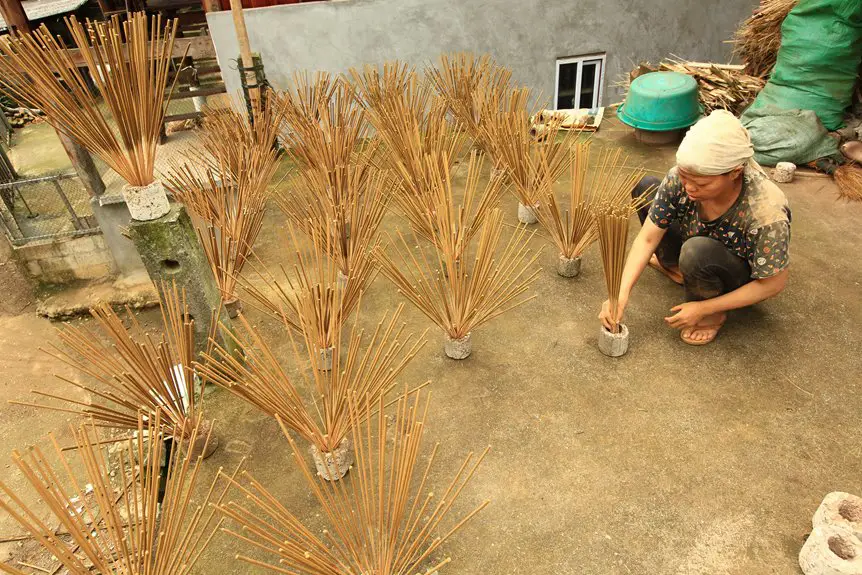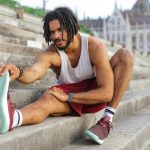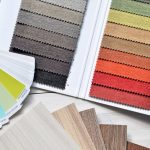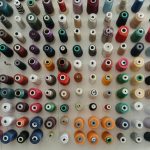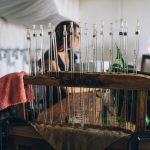You might not realize that the type of fabric your wicking clothes are made from plays a huge role in how much odor they hold onto. Even if two shirts both claim to wick moisture, their ability to keep you smelling fresh can differ greatly. This isn’t just about sweat—it’s about how fibers interact with bacteria and moisture. Understanding these factors can help you make smarter choices when selecting workout gear.
Table of Contents
Key Takeaways
- Natural fibers like cotton absorb sweat and odor molecules, causing longer-lasting smells compared to synthetic fabrics.
- Synthetic fabrics trap odor molecules due to their chemical structure, affecting odor retention differently across materials.
- Moisture-wicking efficiency influences odor buildup; fabrics that don’t dry quickly allow bacteria and odors to linger.
- Breathability and airflow in fabrics help evaporate moisture faster, reducing bacterial growth and odor retention.
- Antimicrobial treatments and proper washing practices significantly impact odor control and longevity in wicking clothes.
The Role of Fabric Composition in Odor Retention
Although many factors affect clothes odor, fabric composition plays a key role in how much smell lingers. You’ll notice that different fabric types trap odor molecules differently.
Natural fibers like cotton tend to absorb sweat and odor molecules more, making the smell stick around longer. On the other hand, synthetic fabrics such as polyester often hold onto odor molecules within their fibers, too, but for different reasons linked to their chemical structure.
Cotton absorbs sweat and odors, while polyester traps smells differently due to its chemical makeup.
Some synthetic blends resist odor buildup better, depending on the weave and treatment. When you pick your wicking clothes, understanding how fabric types interact with odor molecules helps you choose options less prone to retaining unwanted smells.
This knowledge lets you stay fresher, longer, especially during intense activities.
How Moisture-Wicking Mechanisms Affect Odor Buildup
When you wear moisture-wicking clothes, they pull sweat away from your skin and spread it across the fabric’s surface to dry faster. This moisture absorption helps reduce the damp environment where odor-causing bacteria thrive.
However, the way these fabrics manage moisture plays an essential role in odor buildup. If the fabric absorbs moisture but doesn’t dry quickly enough, odor molecules can linger and multiply.
Some moisture-wicking materials trap sweat within fibers instead of fully releasing it, creating pockets where bacteria break down sweat and produce odors. So, even though your clothes feel dry on the surface, trapped moisture inside can lead to stronger smells over time.
Understanding these moisture-wicking mechanisms helps you choose fabrics that minimize odor by efficiently managing both sweat and odor molecules.
Impact of Breathability and Airflow on Odor Control
You’ll notice that good air circulation plays a key role in keeping odors at bay by allowing moisture to evaporate quickly.
Fabrics with higher porosity let more airflow through, helping reduce the buildup of odor-causing bacteria.
Paying attention to ventilation features in your clothes can make a big difference in staying fresh longer.
Importance of Air Circulation
Because air circulation directly affects how moisture evaporates from your clothes, it plays an essential role in controlling odor. When air flows freely through your wicking clothes, sweat dries quickly, reducing the chance for bacteria to multiply and cause odor retention. Poor air circulation traps moisture, making odors linger longer.
| Feeling | Air Circulation Effect |
|---|---|
| Fresh | Enhanced airflow dries sweat fast |
| Frustrated | Stuck moisture causes persistent odor |
| Confident | Breathable fabric supports odor control |
| Disappointed | Limited airflow leads to odor buildup |
Fabric Porosity Effects
Although fabric porosity might seem like a minor detail, it plays a crucial role in how your wicking clothes manage odor. The fabric structure directly influences breathability, affecting how well air flows through the material.
When the pores in the fabric are larger or more interconnected, they allow better airflow, which helps evaporate sweat quickly and reduces moisture retention. On the other hand, tightly woven or less porous fabrics trap moisture close to your skin, creating an environment where odor-causing bacteria thrive.
Ventilation Design Features
Fabric porosity sets the stage for ventilation design features that take breathability and airflow a step further in odor control.
When you choose wicking clothes, consider how ventilation systems enhance airflow dynamics to reduce odor buildup.
Here’s what matters most:
- Strategic mesh panels – They boost airflow in high-sweat zones, letting moisture evaporate quickly.
- Placement of vents – Properly positioned vents encourage continuous air circulation, preventing dampness.
- Layering techniques – Combining fabrics with varying porosity optimizes breathability and odor dispersion.
Antimicrobial Treatments and Their Effectiveness
When you choose wicking clothes, antimicrobial treatments play a key role in controlling odor by targeting the bacteria that cause it.
These treatments vary in antimicrobial effectiveness, depending on the chemicals used and how well they bind to the fabric. You’ll find that some treatments offer stronger, longer-lasting protection, while others wear off after a few washes.
Treatment longevity is essential because once the antimicrobial properties fade, your clothes can start retaining odor again. To get the best results, look for garments with durable antimicrobial finishes designed to withstand repeated laundering.
Differences Between Synthetic and Natural Fibers
Understanding how antimicrobial treatments work leads naturally to contemplating the materials they’re applied to.
When you choose wicking clothes, the fiber type plays a huge role in odor retention. Here’s why:
- Natural fiber benefits include breathability and moisture absorption, which help reduce odor buildup by keeping skin drier.
- Synthetic fiber drawbacks involve trapping sweat and oils close to your body, creating a breeding ground for odor-causing bacteria.
- Many synthetic fabrics lack the natural antimicrobial properties found in fibers like wool, making odors harder to eliminate.
Influence of Washing and Drying Practices on Odor
Although choosing the right fibers matters, how you wash and dry your wicking clothes greatly affects odor buildup.
Using proper washing techniques is crucial—avoid fabric softeners, as they can coat fibers and trap odor-causing bacteria. Instead, opt for detergents designed for activewear, which target sweat and oils effectively. Wash your clothes inside out to reach areas that trap odor.
Proper washing means skipping fabric softeners and using activewear detergents; always wash clothes inside out to combat odor.
When it comes to drying methods, air drying is preferable since high heat from dryers can damage fibers and reduce their odor-fighting abilities. However, if you use a dryer, select a low-heat setting to preserve fabric integrity.
Being consistent with these washing techniques and drying methods guarantees your wicking clothes stay fresher longer, reducing stubborn odors that often linger despite regular cleaning.
Advances in Technology to Combat Odor in Wicking Clothes
You’ll find that antimicrobial fabric treatments now help stop odor-causing bacteria in their tracks.
New moisture-wicking technologies pull sweat away faster, keeping you drier and fresher.
Plus, breathable material innovations improve airflow, reducing the buildup of odor altogether.
Antimicrobial Fabric Treatments
When you wear wicking clothes, antimicrobial fabric treatments play an essential role in keeping odors at bay by targeting the bacteria that cause them.
These treatments use advanced antimicrobial agents embedded in the fabric to prevent bacterial growth, which is the main source of unpleasant smells. Modern fabric technologies have made these treatments more effective and longer-lasting.
Here’s what you should know about antimicrobial fabric treatments:
- Types of Agents: Common antimicrobial agents include silver ions, triclosan, and natural extracts that inhibit bacteria.
- Durability: These treatments are designed to withstand multiple washes without losing effectiveness.
- Safety: Most fabric technologies guarantee antimicrobial agents are safe for skin contact and the environment.
Enhanced Moisture-Wicking Technologies
Antimicrobial treatments help stop odor-causing bacteria, but moisture control plays an equally important role in keeping your wicking clothes fresh. Enhanced moisture-wicking technologies improve moisture management, reducing sweat retention that fuels odor. These fabrics pull moisture away quickly, promoting faster drying and better odor prevention.
| Technology | Moisture Management | Odor Prevention |
|---|---|---|
| Capillary Action | Moves sweat fast | Limits bacterial growth |
| Hydrophilic Fibers | Absorbs & disperses | Reduces damp spots |
| Microfiber Blends | Enhances airflow | Minimizes odor buildup |
Breathable Material Innovations
Although moisture-wicking fabrics reduce sweat, breathable material innovations take odor control a step further by enhancing airflow and ventilation.
You’ll find that these advances tackle odor by improving how air moves through your clothing, preventing bacteria buildup.
Key innovations include:
- Breathable membranes that allow moisture vapor to escape while blocking water, keeping you dry and odor-free.
- Innovative weaves designed to increase fabric porosity, boosting ventilation without compromising durability.
- Hybrid fabrics combining natural fibers with synthetics, optimizing breathability and odor resistance.
Frequently Asked Questions
Can Diet Influence the Odor Retention of Moisture-Wicking Clothes?
You might be surprised, but dietary influences can affect how your moisture-wicking clothes retain odor. Your food choices impact sweat composition, meaning what you eat could make your clothes smell stronger or fresher after workouts.
Do Certain Body Areas Cause More Odor Buildup on Wicking Fabrics?
You’ll notice armpit sweat and foot odor cause more odor buildup on wicking fabrics because those areas produce more bacteria and moisture. That combination makes it harder for your clothes to stay fresh after workouts.
How Does Sweat Composition Affect Odor Retention in Wicking Clothes?
Imagine sweat’s cocktail—its unique composition interacts with fabrics differently. You’ll find that proteins, salts, and oils in your sweat affect fabric interaction, causing some wicking clothes to cling to odors longer than others, even after washing.
Are There Specific Detergents That Worsen Odor in Moisture-Wicking Garments?
You’ll want to avoid detergent types with heavy fabric softeners or additives, as they can worsen odor in moisture-wicking garments by clogging fabric treatments. Choose gentle, sports-specific detergents to keep your clothes fresh and odor-free.
Can Repeated Use Without Washing Cause Permanent Odor in These Fabrics?
You might worry repeated use without washing permanently traps odor, but with proper odor prevention and fabric maintenance, you can keep your wicking clothes fresh. Neglecting washing risks stubborn smells, so stay diligent to avoid damage.
- The Use of Nonwovens in Construction and Civil Engineering - July 11, 2025
- The Use of Nonwovens in Construction and Civil Engineering - July 11, 2025
- The Use of Nonwovens in Construction and Civil Engineering - July 11, 2025

